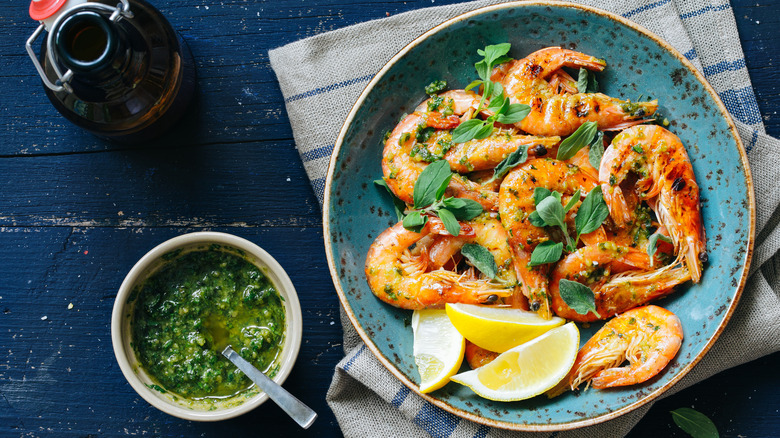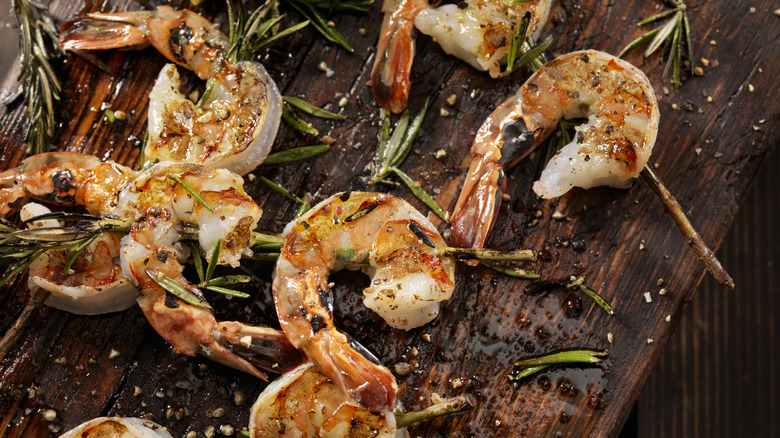Why You Should Never Remove Shrimp Tails Before You Cook Them
Is there anything more humbling than digging around in your shrimp scampi in order to remove the tail from every piece of shrimp? Sure, it's less embarrassing in the privacy of your own home, but when at a restaurant, the last thing you want to do is have melted butter and oil dripping down your fingers as you struggle to wrestle the shrimp out of its tail. However, while this task may seem tedious, there are many reasons you should leave the tails on your cooked shrimp.
For one, leaving the tails on will help you grip the shrimp better. It will also give your dish extra flavor and moisture and make them look larger and more visually appealing. In addition, shrimp tails are beneficial to your health. Not only are the tails digestible, but they're rich in protein, fiber, iron, calcium, and vitamin B.
Shrimp tails can serve a variety of purposes
While leaving the tails on has it perks, this doesn't really apply when you're cooking shrimp for a short amount of time. Because the shells, tail included, contain water-soluble compounds that accentuate the shrimp's umami taste and aromatic compounds that lend even more tastiness to the dish, slow-boiling is more impactful than a quick sauté. If you're using a quick cooking method for the shrimp, marinating them is the best way to add more flavor.
As for cooking time, that seems to change based on the size of shrimp rather than whether or not the tail is still attached. Yet, if you still find that you can't swallow the idea of consuming shrimp tails, set them aside to get the most out of their flavor. Discarded shrimp tails, as well as heads and shells, can be boiled in water with carrots, celery, and onions to make a delicious homemade shrimp stock.

